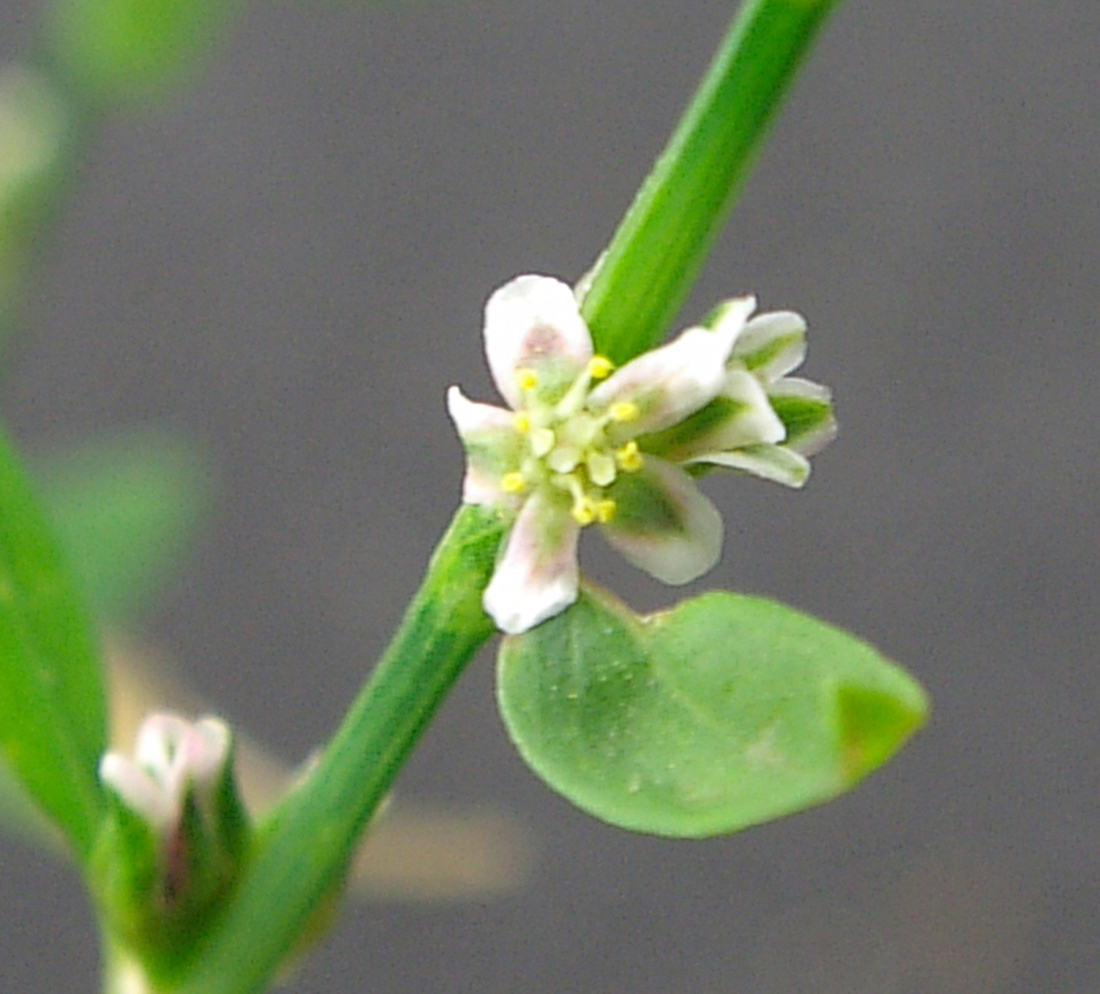Prostrate Knotweed
- Smartweed (Polygonaceae family):
- Polygonum aviculare L.
- EPPO code:
- POLAV
- Other names:
- Doorweed, knot-grass, mat-grass, road-spread
Species information
- Lifecycle:
- Annual.
- Propagation:
- Reproduces by seed.
- Emergence:
- One of the first annual broadleaf weed species to germinate and emerge in the spring.
- Habitat:
- Prostrate knotweed is mainly found on heavily compacted soils, and most commonly in turf and in the cracks of pavement, sidewalks or landscape stone. It can also be found in cultivated fields, but when it does, the plant appears more upright and succulent, and has broader leaves.
- Competitiveness:
- Little data exists on this species competitiveness. A Swedish study that evaluated weed competition in wheat stated that prostrate knotweed “seemed to be the most benign weed species,” while an Italian study identified yield losses in chickpea ranging from a low of 14% (at 16,000 plants/ac) to a high of 88% (at 130,000 plants/ac.
Identification clues
Seedling
- Cotyledons:
- Linear.
- First leaves:
- Prostrate knotweed’s first leaves are alternate, elongated and surrounded by a membranous sheath called an ocrea at the base of the leaf where it meets the stem.
- Mature leaves:
- Mature leaves appear very similar to the young leaves, but they are larger.
Mature plant
- Stems:
- The stem of prostate knotweed is wiry, slender, branched and prostrate in compacted landscapes or with full sunlight, but usually upright when in partially-shaded areas like field crops.
- Flowers:
- Prostrate knotweed’s flowers are small and inconspicuous with five small and greenish to pinkish sepals that appear in clusters at the leaf axils, and are partially enclosed in the ocrea.
- Seeds:
- Dull brown, triangular and about 2 cm long.
- Roots:
- Taproot that penetrates deeply in the soil and make the plant difficult to pull out.
Often mistaken for
I know it's not Striate knotweed because prostate knotweed has much smaller and narrower leaves and is much less upright, regardless of environment.





Updated: January 13, 2023
Published: January 13, 2023